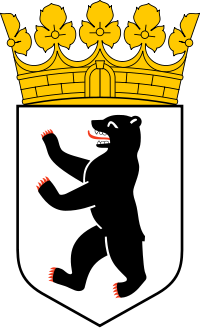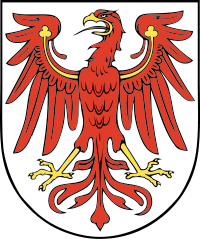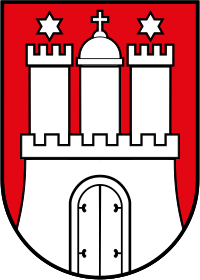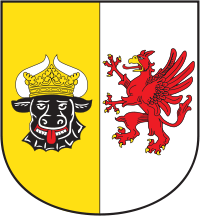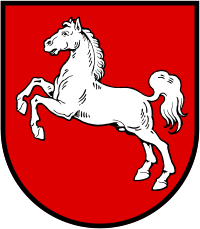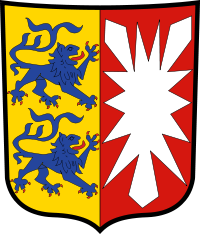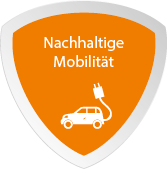Die nachfolgenden Inhalte stammen aus dem Kooperationsprogramm "Interreg Baltic Sea Region" (Version 1.2).
Kurzbeschreibung
Aim is the shift from privat to public transport and the reduction of greenhosue gas emissions and pollution from public transport trough enhanced capacity and environmentally friendly vehicle fleets and better mobility management and planning.
Förderziel
To enhance environmentally friendly transport systems in urban areas based on increased capacity of urban transport actors.
Fördergegenstände
Ausstattung, Versorgungsinfrastruktur, Demonstrations-, Modell- und Pilotvorhaben, Produktentwicklung, Markteinführung, Strategieentwicklung, Konzept-, Teilkonzepterstellung, Vernetzung, Kooperation, Wissenstransfer
Zuwendungsempfänger
- Public authorities/institutions responsible for urban transport, planning and environmental protection.
- Enterprises (in particular transport, logistic and infrastructure providers/operators).
- Academic and research institutions.
- NGOs.
Förderfähige Gebietskulisse
Die förderfähige Gebietskulisse in Deutschland umfasst: Berlin, Brandenburg, Bremen, Hamburg, Mecklenburg-Vorpommern, Niedersachen (nur Lüneburg!) und Schleswig-Holstein.
Kooperationsmöglichkeiten bestehen mit folgenden Staaten: Belarus, Norwegen, Dänemark, Polen, Russland, Schweden.
Achtung: Bitte prüfen Sie im Kooperationsprogramm (KP, CP) welche Teilräume der Staaten förderfähig sind.
Das Programm erlaubt Kooperationen mit Akteuren außerhalb der formalen Grenzen der Baltic Sea Region (BSR) um bereits bestehende Netzwerke zu stärken.
Art der Unterstützung
Non-repayable grant
Beschreibung
According to the EU White paper urban transport is responsible for about a quarter of CO2 emissions from transport. The gradual phasing out of ‘conventionally-fuelled’ vehicles from the urban environment is a major contribution to significant reduction of oil dependence, greenhouse gas emissions and local air and noise pollution. This transition will have to be complemented by the development of fuelling/charging infrastructure for new vehicles. A higher share of travel by collective transport can increase density and frequency of service. Facilitating walking and cycling should be an integral part of urban mobility and infrastructure design. Introduction of alternative propulsion systems and fuels in particular can be suitable for large fleets of urban buses, taxis and delivery vans. Cities will have to adopt their infrastructure and transport systems to reduce carbon emissions. They will also need to develop cleaner and more efficient forms of transport and innovative mobility patterns, which maximize the use of clean and energy efficient vehicles and non-motorized transport. Transport efficiency should be supported by development of traffic management systems to improve cost efficiency and safety, reduce environmental impact and to allow greater interoperability between transport modes. The programme funds actions supporting transition from a primarily car based personal mobility to a mobility based on high quality public transport, less used and cleaner passenger vehicles as well as walking and cycling. The interfaces and links between urban, inter-urban transport and commuting from other areas to urban areas should be taken into account. The actions should support multi-modality in urban passenger transport. Public services should be forerunners when implementing clean fuel strategies. The programme does not support local actions. Exchange of experience can be part of projects, however, partners should go beyond and ensure that their actions increase the use of environmentally friendly and low carbon transportation in BSR cities. This involves promoting acceptance of decision makers, attracting investments, setting up new regulations or transport plans and piloting new transport solutions. New project proposals should take into consideration achievements of the BSR 2007-2013 namely piloting of introduction of biogas buses in the selected urban areas of the BSR.
Examples of actions:
- Developing sustainable urban mobility policies/plans that provide a comprehensive framework for the development of integrated and sustainable transport systems.
- Auditing of urban transport systems to evaluate the performance of passenger and freight transport, and to identify the main bottlenecks.
- Developing and setting up urban mobility management systems as part of low-carbon transport strategies.
- Optimising urban logistics, e.g. improving transport flow management and monitoring.
- Piloting the use of hybrid or alternative fuel such as biogas or other environmentally friendly energy.
- Piloting the use of vehicle fleets with higher energy efficiency and less emission in urban areas.
- Promoting an attractive market for clean and energy-efficient road transport vehicles through, e.g. introducing Green Public Procurement schemes.
- Piloting and demonstrating the mobility management in cities to manage the demand for car use by changing attitudes and travel plans.
- Piloting and demonstrating the development of the intelligent transport systems for urban mobility.
Zielgruppe
Providers and users of public transportation and users of privat transportation.
Zentrale Zuwendungsvoraussetzungen
Wichtige weitere Informationen zu Zuwendungsvoraussetzungen, wie z. B. die Mindestanzahl an Projektpartnern, finden Sie in den zugehörigen Unterlagen.
Auswahlverfahren
Das Auswahlverfahren findet sich ab Seite 61 des Programmhandbuchs. Die Auswahl geeigneter Projekte findet in zwei Schritten statt. Im ersten Schritt wird von den Bewerbern nur ein Konzeptpapier eingereicht. Falls das Konzeptpapier nach einer Prüfung positiv bewertet wurde, wird der Bewerber aufgefordert, eine vollständige Projektbewerbung einzureichen, auf deren Basis die Projekte schlussendlich ausgewählt werden. Die Kriterien finden sich auf Seite 70-73 des Programmhandbuchs.
Projektauswahlkriterien
Die Bewertung der Anträge umfasst eine Prüfung der formalen Zulässigkeit (Eligbility Check, eine Liste der Kriterien findet sich auf Seite 66-67 des Programmhandbuchs) und bei positivem Bescheid eine Qualitätsprüfung (Assessment). Diese umfasst mehrere Kriterien, die auf Seite 70-73 aufgelistet sind. Das Ergebnis wird dem Monitoring Committee für ihre endgültige Entscheidung vorgelegt. Bitte konsultieren Sie auch das Programmhandbuch für nähere Informationen.
Laufzeit
Start der Maßnahme: 01.01.2014
Ende der Maßnahme: 31.12.2023

